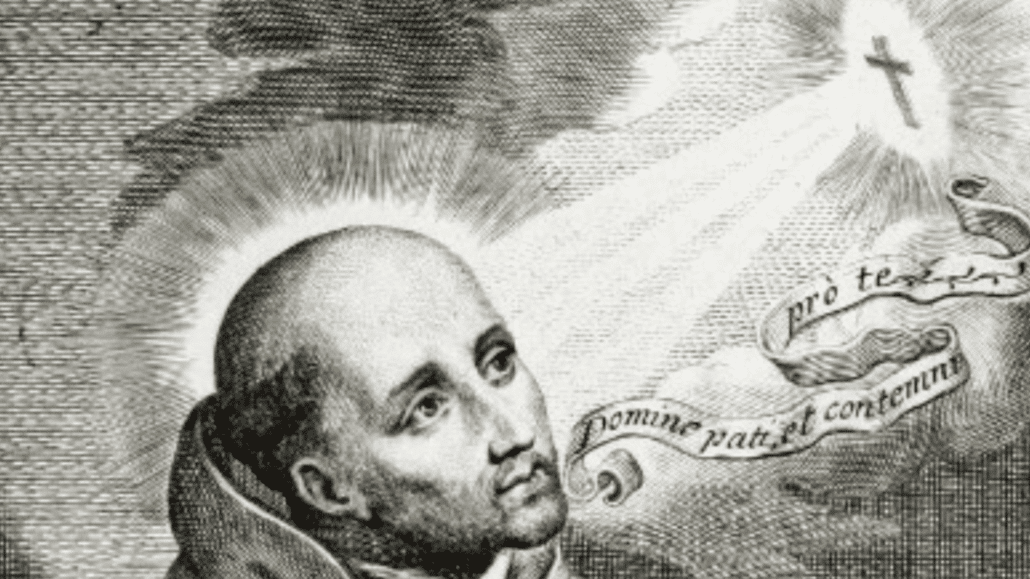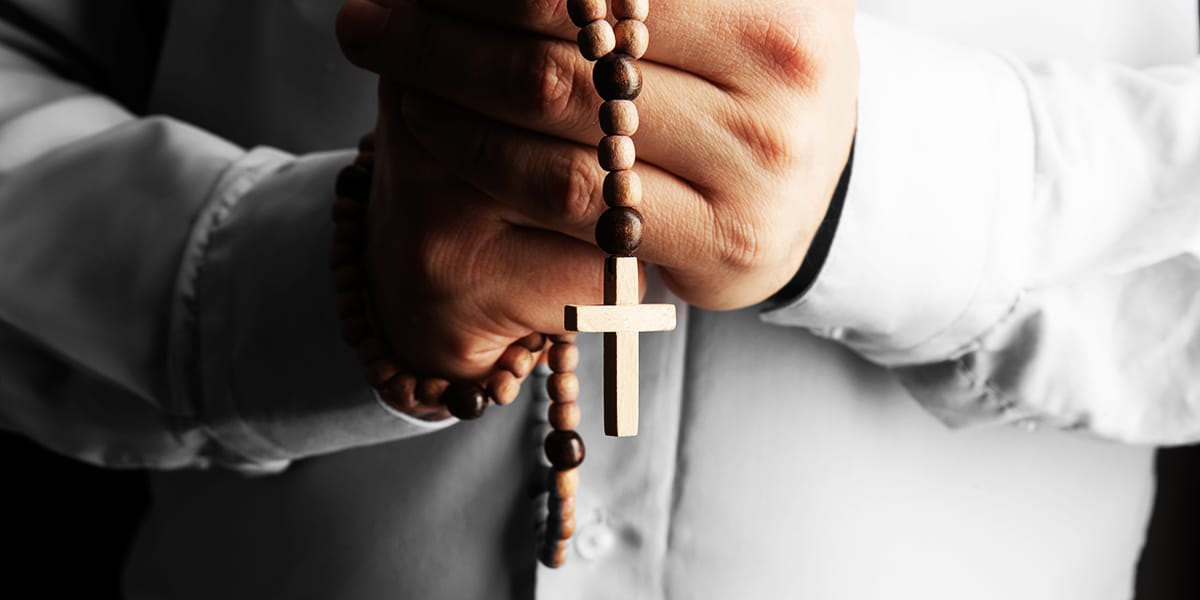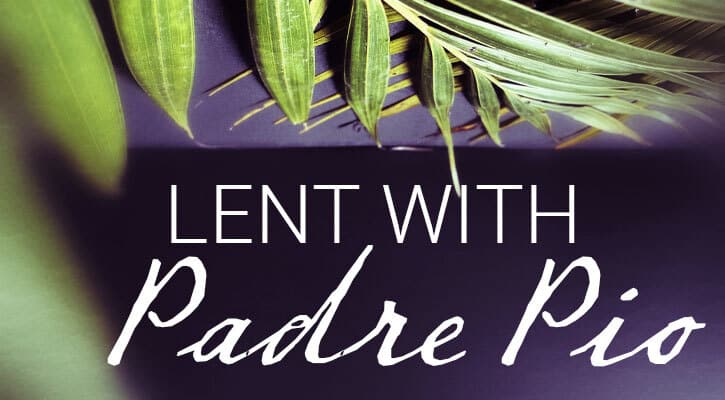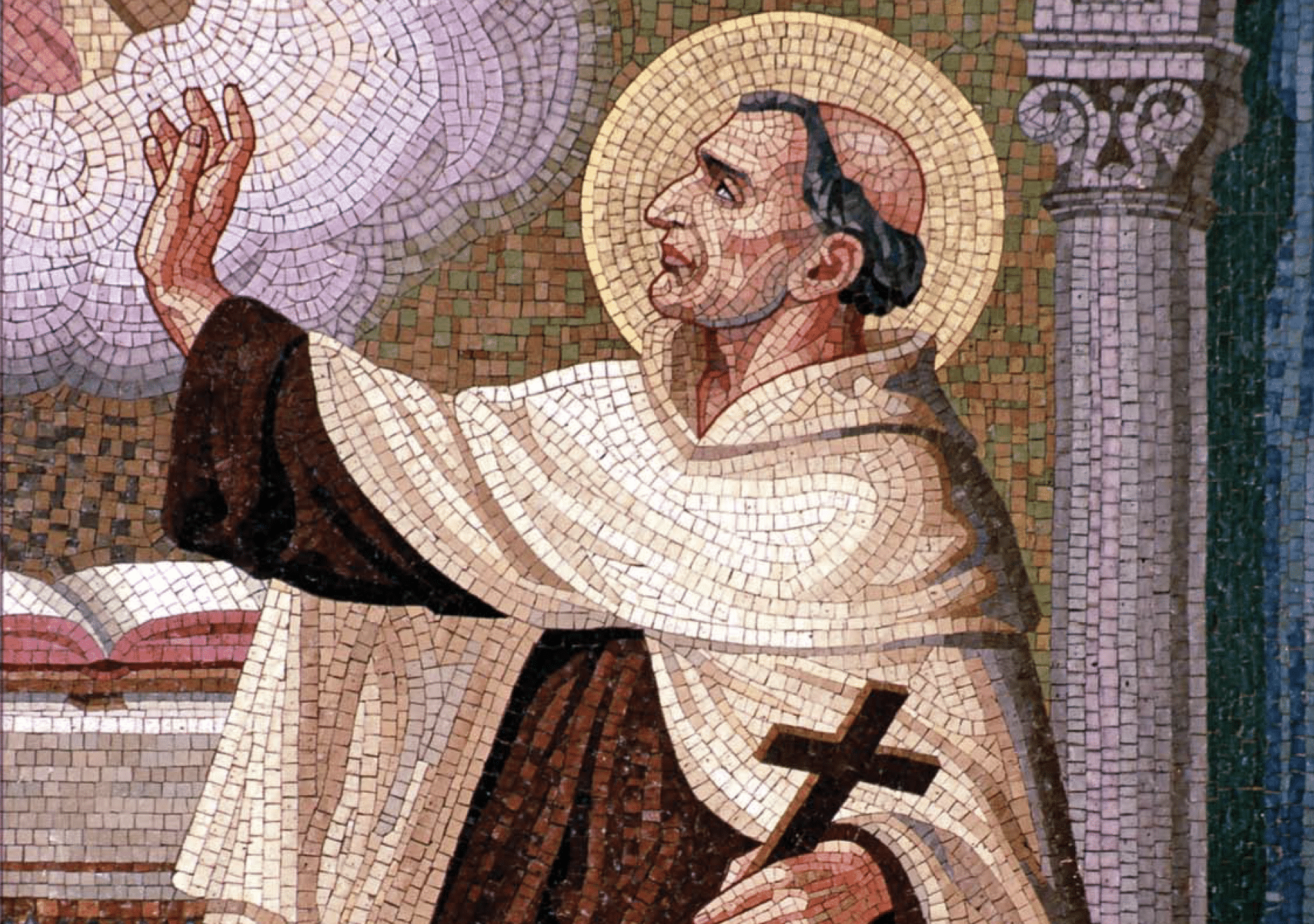One of the greatest mystical poems was written in prison by a Carmelite priest whom we know today as St. John of the Cross. The year was 1578, and the prison was a priory in Toledo, the famed Spanish city whose images the great painter El Greco has seared into our mind’s eye. Dark and forbidding is the city of Toledo in the paintings of El Greco.
There is an El Greco painting in the Cincinnati Art Museum entitled “Christ on the Cross with a View of Toledo.” Dark are its hills, dark the city, dark the clouds—all in the background, except for streaks of light that are the color of the crucified Christ in the foreground, his elongated body dominating the canvas. Christ’s head is tilted heavenward, his eyes rapt in contemplation.
The cross itself seems at first to be superimposed on a hostile landscape, or more accurately, cityscape, whose only light is the light it shares with the crucified figure that is its icon. The cross is planted in a foregrounded hillside, reminiscent of Calvary. Because of El Greco’s use of light, the figure of Christ seems to wear the color of the city buildings, their only redeeming feature in the dark stormy landscape.
When I contemplate this painting of Christ on the cross, it seems oddly to be the Christ of St. John’s personal dark night, a prisoner somewhere in those cold forbidding buildings. There, betrayed by some of his own brothers who opposed the reforms he had initiated in the Carmelite way of life, John was confined for nine months in a room measuring six by ten feet, except for brief excursions to the refectory from time to time where he was flogged, kept on a diet of bread and water, and then returned to solitary confinement. He did not complain or curse his tormentors. He entered instead into that dark night illumined by a light he could not see, which seemed to him as dark black as the night within his prison cell.
From December 3, 1577, to August 1578, he surrendered to the darkness and let its hidden light purge his soul. He wrote poems that became his “Spiritual Canticle.” In August he miraculously escaped and was sheltered by Teresa of Avila’s nuns in Toledo. Like the elongated, stretched figure of Christ, John had been stretched by his experience in prison, and he recorded that stretching for posterity.
John wrote the stanzas of his poem “The Dark Night” and those of “The Spiritual Canticle,” and he wrote lengthy prose explications of both. They explain where the light is coming from on the body of El Greco’s crucified. There is no light in the sky, except small light-gray cracks here and there. The light comes from within as John explains in the dark night.
Christ Illumined
In the painting, the light of that terrible journey breaks through the skin of Christ suffused with a flesh tone that is but a lightening of the dark sky and of the dark folds of Christ’s skin. He is transformed into a lithe upward-winging man who seems to be metamorphosing into an angelic figure—except for the twisted legs and arms. The light shines through but not brightly or gaudily. It is revealed only in the sense that the man’s flesh can be seen as the flesh of a man because of a light coming from somewhere other than the sun.
Christ is becoming a man illumined, the illumination being solely his manhood visible because of the light he himself has become. This is the light of St. John’s dark night, as it reveals itself in the person who has undergone divine illumination. Even the dark folds of Christ’s flesh seem ready to unfold, their flesh colors suffused with the same inner light.
The cross in the painting is made of straight, well-cut planks; the figure on the cross is twisted, not by the cross, but by the struggle between light and darkness, the very struggle stretching the figure, twisting it into a graceful, almost flame-like elegance.
There is, at this point of Christ’s emergence, no pain, no blood, except for the dull, dried blood in the hands and feet. And there is no wound in the side! He is, as it were, already rising. Or better perhaps, emerging, for under the left armpit, there is what looks like a peeling back of the sky as of a black piece of paper, so that Christ seems to be emerging out of that black sky, his emergence tearing open and peeling back the blackness.
God’s mystical light, while seeming to impoverish the soul of its natural affections and possessions, is in reality preparing one to be able to enjoy fully all earthly and heavenly things with a divine freedom from attachment to them. In John, as in all mystics, to be pure and completely open before God is the purpose of the dark night, of living in darkness—but in order, then, to see the light and to see by that same light. Seeing by means of that infused Divine Light is what contemplation is.








